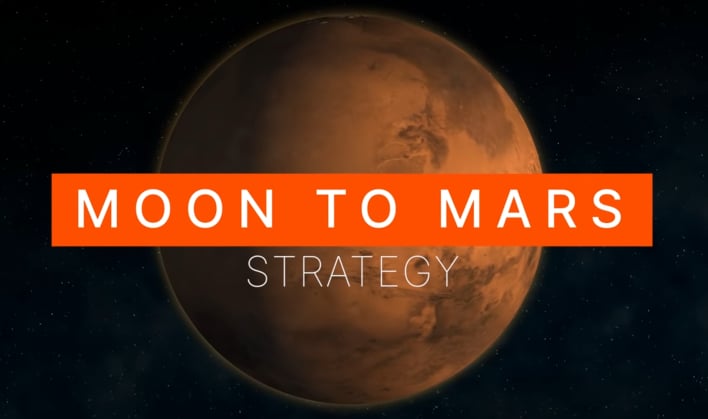NASA Outlines Moon To Mars Mission That Will Fly Astronauts To The Red Planet For 30 Days

The Artemis program is currently preparing to send the first humans back to the Moon. Those missions will include the first female and person of color to put boots onto the surface of the Moon. NASA has also stated that it is aiming to create a Moon base in the future that will serve as a jump off point for future missions to Mars. The ultimate goal is to progress to missions that will take humans to Mars and even beyond.
Currently NASA has plans to launch astronauts to Mars by the late 2030s or early 2040s. However, being able to effectively carry out those plans has been, and will continue to be challenging. The space agency released a call to arms of sorts last week, as it released its top objectives for a 30-day, two-person Mars surface mission and asked the public to provide feedback on how the planning is progressing.
In a video NASA released on May 17th, Dr. Kurt (Spuds) Vogel, Director of Space Architectures, Office of the Administrator, stated what the agency viewed as the underlying principles to the mission. "Underlying principles are to be goal based, to have constancy and unity of purpose and improved communication and engagement both inside and outside the agency."
Vogel added, "So what we want to do is get back into a unified approach with a constancy of purpose where everybody is communicating from the same sheet of music and we all have the same plan."
In terms of the feedback NASA is asking for, Deputy Administrator Pam Melroy stated in a recent blog, "The feedback we receive on the objectives we have identified will inform our exploration plans at the Moon and Mars for the next 20 years. We're looking within NASA and to external stakeholders to help us fine-tune these objectives and be as transparent as possible throughout our process." She added that the hope with this approach is to find potential gaps in architecture, as well as areas where its goals align with the international community for future collaboration.
Once all the feedback has been received, the plan is to work with partners in order to discuss all of the input and finalize the framework by this fall, according to Jim Free, Associate Administrator for the Exploration Systems Development Mission Directorate.
If you are interested in reading the full 50 objectives and glossary of terms, it is available on the NASA website. Initially the opportunity to give feedback was to close on May 31st. But NASA has extended the time the public can do so until June 3, 2022.
*Update 5/24/2022 11:47 a.m. EST: The anticipated mission will include 4 astronauts using a hybrid rocket stage, powered by both chemical and electrical propulsion. The mission would only have 2 astronauts actually touch the Martian surface, similar to the Apollo program. Waiting on the crew would be an estimated 25 tons of supplies and hardware that will be delivered by a previous robotic mission. A round trip mission to Mars would take roughly 500 days given the distance between Earth and Mars.
Top Image Courtesy of NASA

